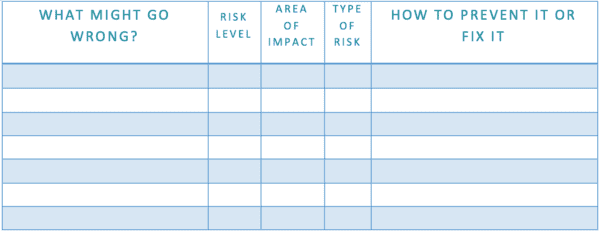Project Management – Risk Planning:
Project management is the process of leading the work of a team to achieve all project goals within the given constraints. This information is usually described in project documentation, created at the beginning of the development process. The primary constraints are scope, time and budget. Project managers balance those constraints along with risk, resources and quality.
Every project proceeds through a cycle comprised of four stages:
- Initiating: Getting a project underway can be very simple or very complex. Initiating a project is the opportunity to establish components and boundaries, so that the size and shape of the project—as well as its outcomes—are all understood and agreed upon before beginning work.
- Planning: Planning is an important second phase because the amount of time and energy dedicated to planning will correlate directly to how well the project stays on schedule and on budget, and how well it meets its goals.
- Executing: The core of the project is in the end, the doing itself—the creation or implementation.
- Closing: The last phase in every project is the closing. This is the opportunity to focus on the quality of the project deliverables and the effectiveness of the team’s work and processes.
Organizations realize the benefits of project management skills and abilities, and they need everyone to have that skill set, not just their official “project managers.” In fact, virtually everyone manages projects from time to time – if you’ve ever organized getting a group of your friends to the movie theater, buying tickets, picking seats and buying snacks in time to see the previews – you’ve managed a project.
Materials:
- Jenga Game
Alternatives for stretch activities may include a deck of cards, paper cups, LEGOs or any other sort of non-interlocking blocks.
Background:
A major part of project management is risk identification and planning, which is usually done during the planning phase but continues throughout the project lifecycle. This involves considering the “worst case scenario” for each milestone or activity (depending on the scope of the project), and then planning how to negate or address the risk.
When planning for risk, there are three related areas to consider:
- Risk Level: How likely is it to happen? This can be characterized as a percentage or ratio or as “high,” “medium,” and “low.” The level will help determine how many resources should be put toward avoiding a negative event.
- Area of Impact: Which parts of the project might be affected by the negative event? Assessing the implications of a negative event is also helpful when determining how important it is to avoid it.
- Type of Risk: The type of risk can impact the severity of the outcome if it occurs and will often help identify those risks, which may have low risk levels but significant project impacts.
Using the indicated letters, you’ll assess the level of risk, the area of risk, and the type of risk for each deliverable in a project.
| Risk level
· L = Low · M = Medium · H = High |
Area of Impact
· R = Resources · T = Timing · S = Scope · Q = Quality |
Type of Risk
· L = What you learn · Q = The end product quality · P = The project processes |
Procedure:
- Set up the Jenga Game.
- Now consider the risks associated with the surface you chose to set up on. For example: if you place your Jenga tower on the carpet it has a less stable base than if you put it on a solid surface like a tile floor. Placing it on a table introduces the risk that someone will bump the table while playing and jostle the tower, as opposed to putting it on a counter top. Putting it on the floor instead of on a raised surface increases complexity of removing blocks.
- Start playing the game. As you remove blocks and place them on top of the tower consider the risks to the structure like decreased stability as blocks are removed in lower levels.
- Assess the risks associated with each move – including the risk that the tower may collapse until that risk occurs.
- Do the risks change if instead of Jenga blocks you’re using LEGOs or paper cups? If you’re building a tower of cards are the types of risks you need to consider different? Build a tower out of different materials and assess each risk again.

"try" - Google News
June 18, 2021 at 04:59PM
https://ift.tt/3q4UhuB
Try This Project Management Challenge! - All Together - Society of Women Engineers
"try" - Google News
https://ift.tt/3b52l6K
Shoes Man Tutorial
Pos News Update
Meme Update
Korean Entertainment News
Japan News Update
Bagikan Berita Ini














0 Response to "Try This Project Management Challenge! - All Together - Society of Women Engineers"
Post a Comment